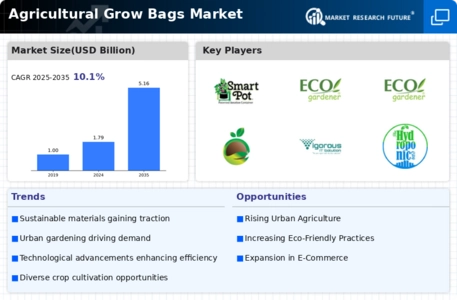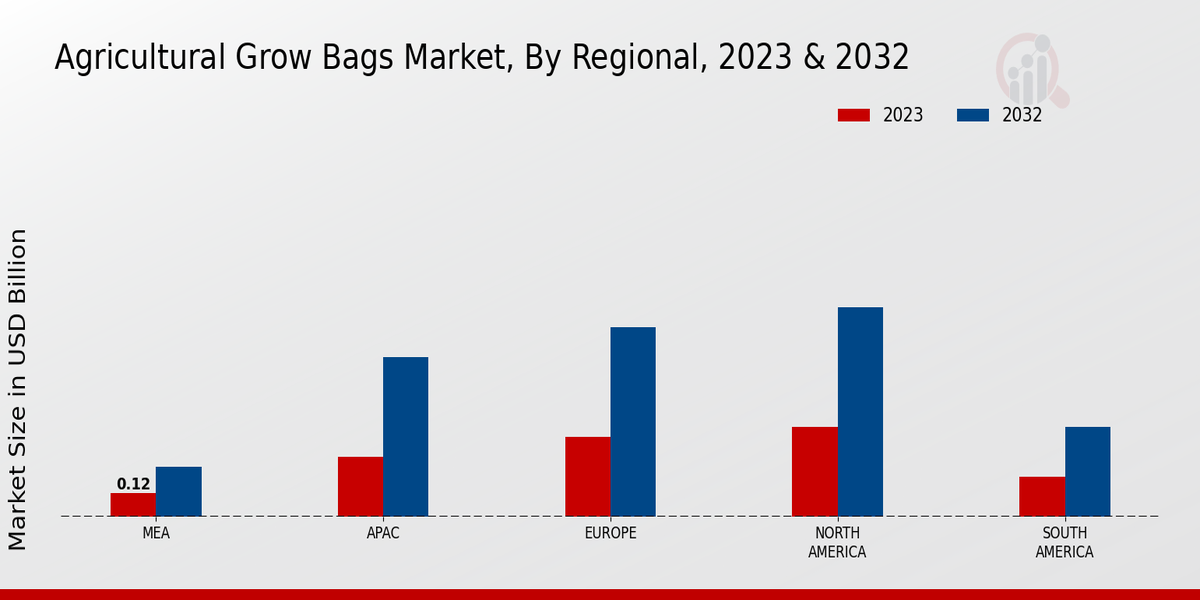Market Growth Projections
The Global Agricultural Grow Bags Market Industry is poised for substantial growth, with projections indicating a market size of 1.79 USD Billion in 2024 and an anticipated increase to 5.16 USD Billion by 2035. This growth trajectory reflects a compound annual growth rate of 10.11% from 2025 to 2035. Such figures underscore the increasing adoption of grow bags across various demographics, driven by factors such as urbanization, sustainability, and technological advancements. As the market evolves, stakeholders are likely to explore new opportunities and innovations to meet the changing demands of consumers.
Growing Interest in Home Gardening
The Global Agricultural Grow Bags Market Industry benefits from the increasing interest in home gardening, which has gained momentum as individuals seek to cultivate their own food. This trend is particularly pronounced among millennials and younger generations who prioritize organic produce and self-sufficiency. Grow bags offer a practical solution for home gardeners, enabling them to grow vegetables, herbs, and flowers in limited spaces. The rising popularity of home gardening not only drives demand for grow bags but also fosters a community focused on sustainable living and healthy eating, further propelling market growth.
Urbanization and Space Constraints
Urbanization significantly influences the Global Agricultural Grow Bags Market Industry as more individuals reside in urban areas with limited gardening space. Grow bags provide an innovative solution for urban dwellers, allowing them to cultivate plants in confined spaces such as balconies, patios, and rooftops. This adaptability not only caters to the growing urban population but also promotes local food production. The convenience of grow bags, which can be easily moved and rearranged, enhances their appeal. As urban gardening continues to gain traction, the market is poised for growth, aligning with the broader trend of urban agriculture.
Rising Demand for Sustainable Agriculture
The Global Agricultural Grow Bags Market Industry experiences a notable surge in demand driven by the increasing emphasis on sustainable agricultural practices. As consumers become more environmentally conscious, the shift towards eco-friendly growing solutions becomes evident. Grow bags, often made from biodegradable materials, align with this trend, offering a sustainable alternative to traditional planting methods. This shift is reflected in the projected market growth, with the industry expected to reach 1.79 USD Billion in 2024 and potentially expanding to 5.16 USD Billion by 2035. The compound annual growth rate of 10.11% from 2025 to 2035 indicates a robust future for sustainable agricultural solutions.
Government Initiatives Supporting Agriculture
Government initiatives aimed at promoting agricultural sustainability and innovation play a crucial role in the Global Agricultural Grow Bags Market Industry. Various countries implement policies and provide funding to support sustainable farming practices, including the use of grow bags. These initiatives not only encourage farmers to adopt modern agricultural techniques but also raise awareness about the benefits of using grow bags. As governments prioritize food security and environmental sustainability, the market for agricultural grow bags is expected to flourish, creating opportunities for manufacturers and suppliers in this sector.
Technological Advancements in Material Science
Advancements in material science contribute significantly to the Global Agricultural Grow Bags Market Industry. Innovations in fabric technology have led to the development of breathable, durable, and lightweight materials that enhance plant growth and health. These materials allow for better aeration and drainage, which are crucial for root development. As manufacturers adopt these new technologies, the quality and performance of grow bags improve, attracting more consumers. This trend is likely to bolster market growth, as improved product offerings can lead to increased adoption rates among both amateur and professional gardeners.












